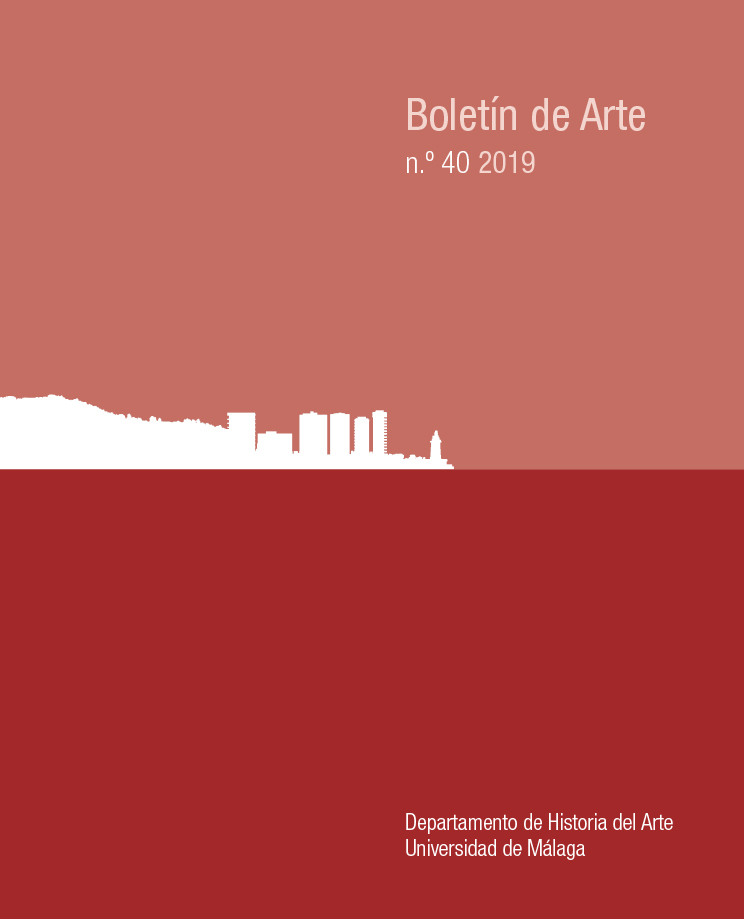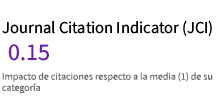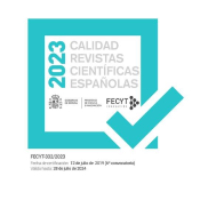Deliberations on the Human and the Animal within. Ali, der Schimmelhengst, Alfred Kubin’s Equine Self-Portrait
DOI:
https://doi.org/10.24310/BoLArte.2019.v0i40.5663Abstract
Two of the aspects that particularly characterise German Expressionism are the spiritual in art and the concept of empathy in the artistic practice. These ideas reached further over the years, also applying them to the perception of nature and the perception of the animal kingdom. The Austrian artist Alfred Kubin, one of the founding members of The Blue Rider group, followed in the wake of this artistic association even after its dissolution in 1914. After almost two decades, Kubin revived the expressionist ideology in one of his most peculiar works: Ali, der Schimmelhengst – a short illustrated tale which questions the transcendental, destiny and nature through the eyes of a white horse.
Downloads
Metrics
Publication Facts
Reviewer profiles N/A
Author statements
Indexed in
-
—
- Academic society
- N/A
- Publisher
- Universidad de Málaga.
References
ASSMANN, Peter (2003), “Zum Kult der “Anderen Seite” – Beobachtungen zu Alfred Kubins “Bestiarium”” en IVANOVI?, Christine; LEHMAN, Jürgen; MAY, Markus. Phantastik – Kult oder Kultur?: Aspeckte eines Phänomens in Kunst, Literatur und Film. Springen Verlag, Berlín - Heidelberg, pp.57-74.
ASSMANN, Perter; RACHEWILTZ, Siegfried de (1998), Alfred Kubin: Bestiarium. Eine Ausstellung des Landesmuseums Schloß Tirol in Zusammenarbeit mit der Landesgalerie Oberösterreich. Bolzano - Spangerberg, Merano - Múnich.
ASSMANN, Peter; HOBERG, Annegret (1999), Alfred Kubin. Das lithographische Werk. Oberösterreichische Landesgalerie - Hirer Verlag, Linz - Múnich.
BENJAMIN, Walter (1971), “Sobre el lenguaje en general y sobre el lenguaje de los humanos” en Angelus Novus. Edhasa, Barcelona, pp.145-165.
BONET, Juan Manuel (1998). Alfred Kubin, sueños de un vidente. Conselleria de Cultura, Educació y Ciència de la Generalitat de València.
BROCKHAUS, Christoph & PETERS, Hans Albert (1977), Alfred Kubin. Das zeichnerische Frühwerk bis 1904. Kunsthalle Baden-Baden, Baden-Baden.
CHARBONEAU-LASSAY, Louis (1997), El bestiario de Cristo: el simbolismo animal en la Antigüedad y la Edad Media. Vol. 1. Liberduplex, Barcelona.
CHEVALIER, Jean (1986), Diccionario de los Símbolos. Herder, Barcelona.
CIRLOT, Eduardo (1992), Diccionario de Símbolos. Labor, Barcelona.
GEYER, Andreas (1995), Alfred Kubin. Träumer auf Lebenszeit. Alfred Kubin als Literat., Böhlau Verlag, Viena - Colonia - Weimar.
GONZÁLEZ GALLINAS, Enrique (2017), “La cuestión del límite entre el hombre y el animal en el pensamiento de Jaques Derrida” en ÉNDOXA: Series filosóficas, nº40, pp.291-310.
HANSEN, Beatrice (2000), On Walter Benjamin’s other History: of Stones, Animals, Human Beings, and Angels. University of California Press, Berkeley.
HOBERG, Annegret (1991), Alfred Kubin 1877-1959. Städtische Galerie Lenbachhaus, Múnich.
HOBERG, Annegret (2018) Phantastisch! Alfred Kubin und der Blaue Reiter. Lenbachhaus-Wienand, Múnich.
KLEIN, Michael (1983), Fritz von Herzmanovsky-Orlado. Die Briefewechsel mit Alfred Kubin 1903 bis 1952. Residenz Verlag, Salzburgo.
KUBIN, Alfred (1974), Aus meinem Werkstatt: gesammelte Prosa. Nymphenburguer Verlag, Múnich.
KUBIN, Alfred (2017), De mi vida; Desde la mesa del dibujante y otros escritos. Antonio Machado, Madrid.
KUBIN, Alfred. (1972). Die wilde Rast. Alfred Kubin im Waldhäuser. Briefe an Reinhardt und Hanne Koeppel. Nymphenburger Verlag, Múnich
KUBIN, Alfred (2004), El gabinete de curiosidades. Autobiografía. Maldoror, Vigo.
LARANGÉ, Daniel S (2009), “L’animal, l’homme et le monstre dans l’univers onirique d’Alfred Kubin. Du bestiaire à la tératologie humaine” en Sociétés & Représentations, nº27, pp.141-154.
MARKS, Alfred (1977), Der Illustrator Alfred Kubin: Gesamtkatalog seiner Illusrtationen und buchsküntslerischen Arbeiten. Spangenberg Verlag, Múnich.
MORGAN, David (1996), “The enchantment of Art: Abstraction and Empathy from German Romanticism to Expressionism” en Journal of the History of Ideas, Vol.57, nº2, pp.317-341.
RAABE, Paul (1977), Alfred Kubin 1877-1977. Spangerberg Verlag, Múnich.
WALLY, Barbara (1993), Emmy Haesele. Galerie Altnöder, Salzburgo.
Downloads
Published
How to Cite
Issue
Section
License
Todos los contenidos publicados en la revista Boletín de Arte están sujetos a la licencia Creative Commons Reconocimento-NoComercia-Compartirigual 4.0 cuyo texto completo puede consultar en <http://creativecommons.org/licenses/by-nc-sa/4.0>

Los/as autores/as cuyas contribuciones sean aceptadas para su publicación en esta revista conservarán el derecho no exclusivo de utilizar sus contribuciones con fines académicos, de investigación y educativos, incluyendo el auto-archivo o depósito en repositorios de acceso abierto de cualquier tipo.
La edición electrónica de esta revista esta editada por la Editorial de la Universidad de Málaga (UmaEditorial), siendo necesario citar la procedencia en cualquier reproducción parcial o total.












4.png)
